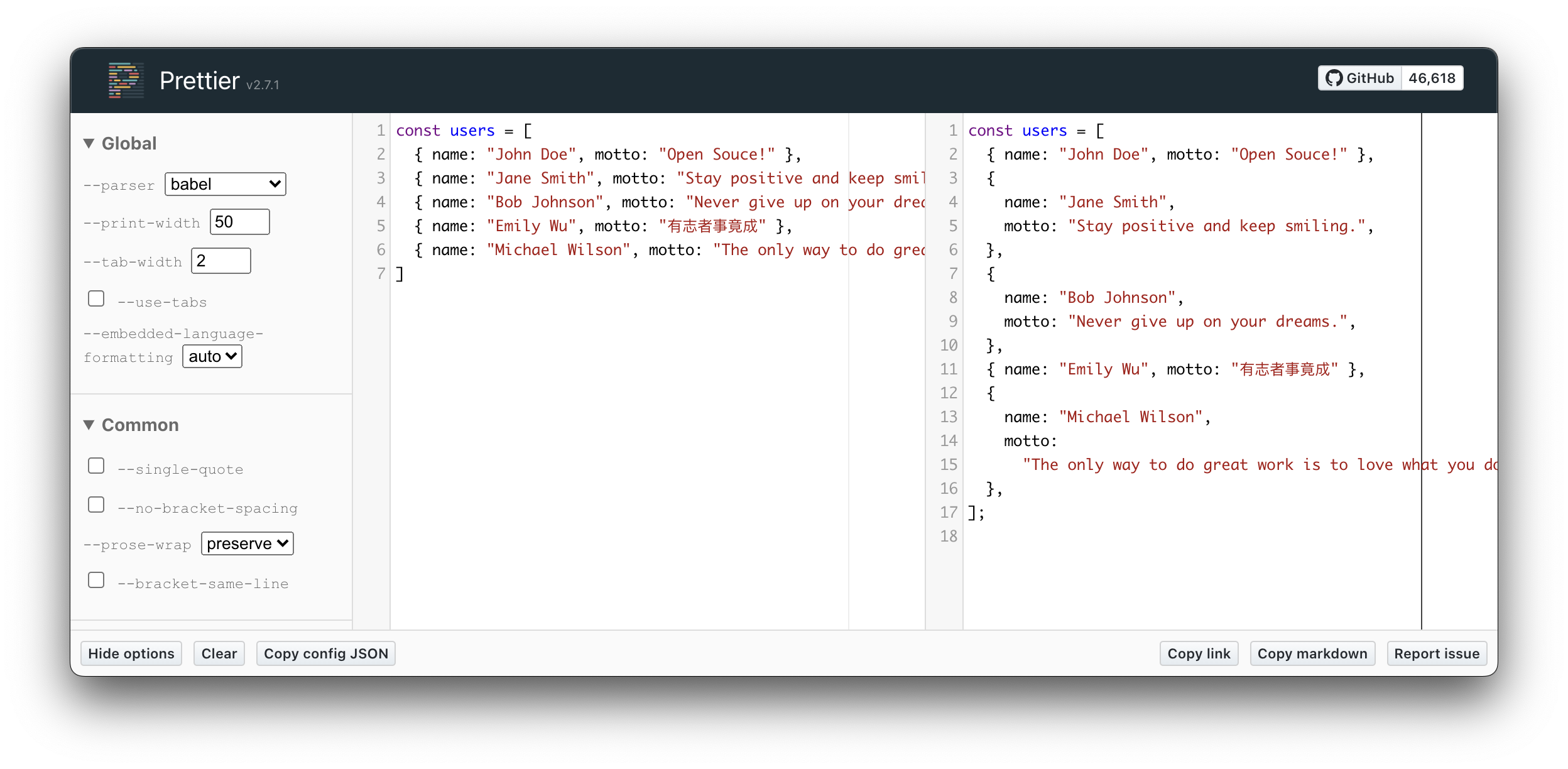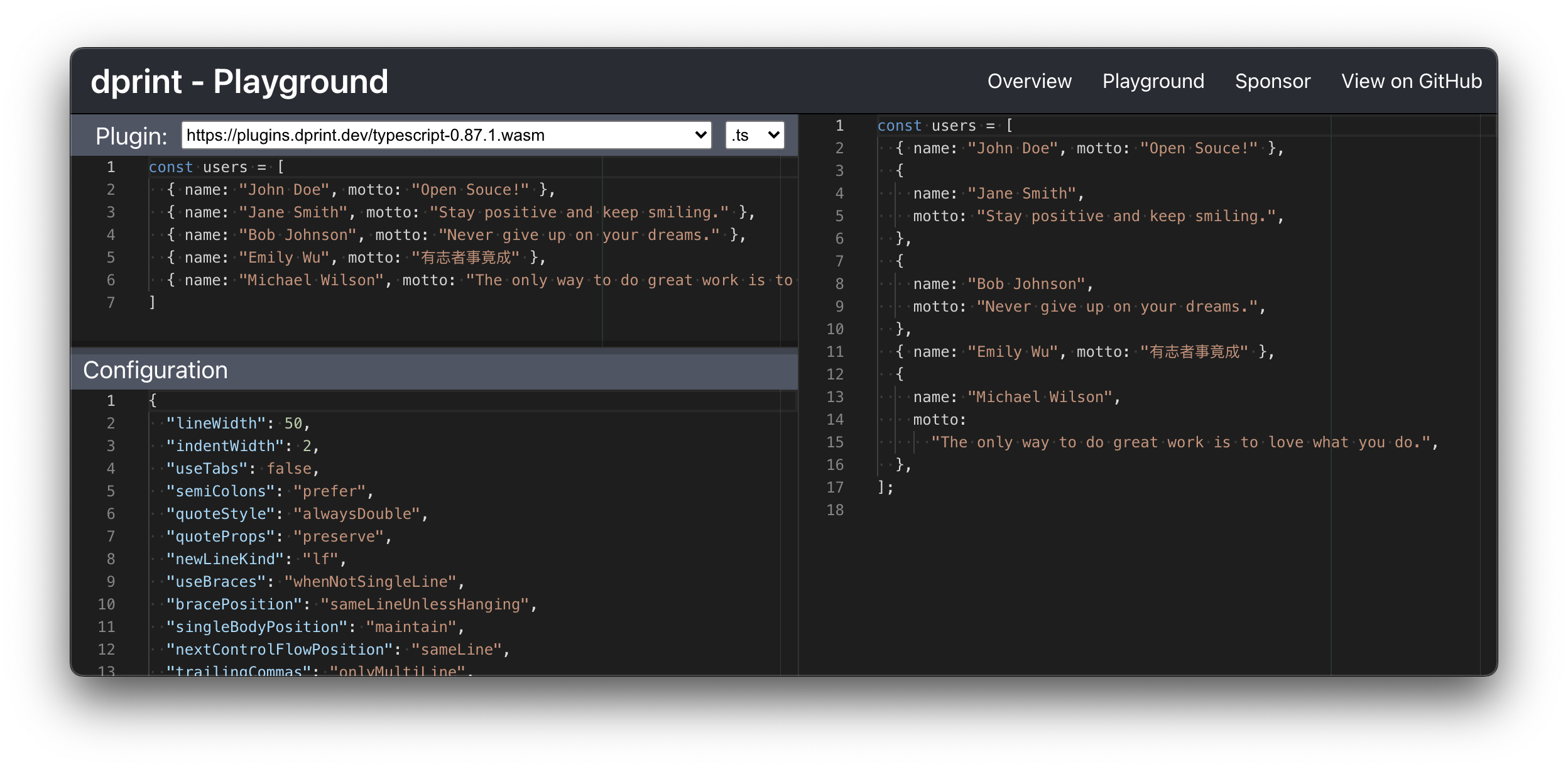Why?
This project was initiated as ESLint and typescript-eslint teams decided to deprecate formatting/stylistic-related rules from their core due to the maintenance cost. This project ports those rules and distributes them as separate packages. We will keep them maintained as the community.
In addition, we also created some new rules to fill the gaps and provide better stylistic control.
Linters vs. Formatters
You might have seen some discussions discouraging using ESLint to format source code, as Linters and Formatters are tools in different scopes. While we generally agree that ESLint would not be the most efficient tool to do formatting, we see that currently ESLint with auto-fix is still the best tool for source code formatting, as it provides fine-grained control of each rule, having incredible extensibility, and respects the input of the source code.
The popular formatters like Prettier and dprint are great on formatting code. However, the main issue we see is that their "read-and-reprints" approach throw away all the stylistic information from the source code, meaning that we can't preserve the styles that we consider more "human-readable".
Here are two examples that Prettier and dprint would force the code wrap/unwrap due to the fixed printWidth options. Not only it makes the code less visually readable, it also creates unnecessary wrapping/unwrapping diff in version control when changing the length of content.


This behavior is mandatory due to the fundamental nature of their approach.
With stylistic rules in ESLint, we are able to achieve similar formatting compatibility while retaining the original code style that reflects the authors/teams' intentions, and apply fixes in one go.
This project is maintained for those who care about such details and want to have full control of the code style.
If you are interested in learning more, we recommend reading Anthony Fu's Why I don't use Prettier post.